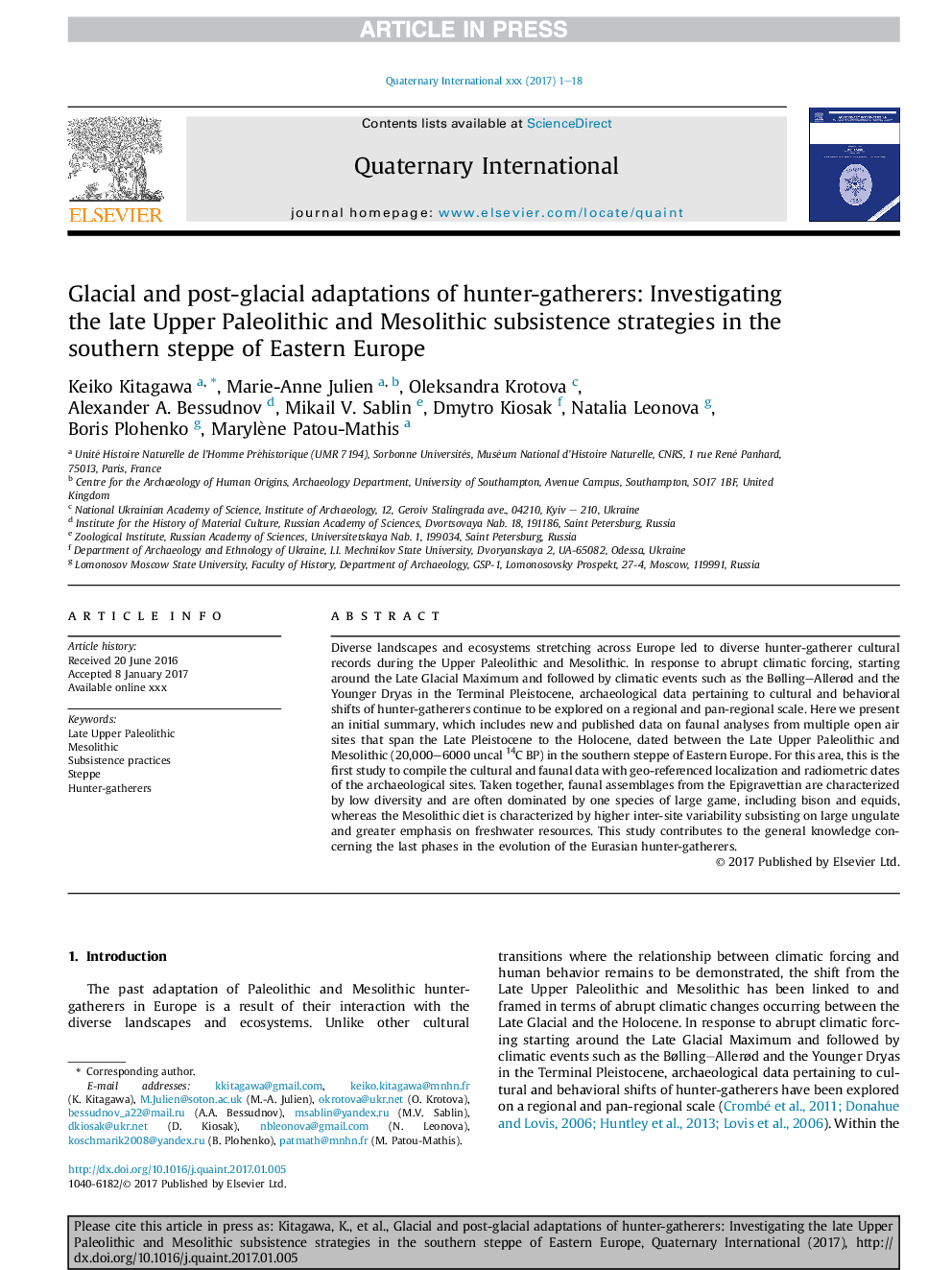| Article ID | Journal | Published Year | Pages | File Type |
|---|---|---|---|---|
| 7450753 | Quaternary International | 2018 | 18 Pages |
Abstract
Diverse landscapes and ecosystems stretching across Europe led to diverse hunter-gatherer cultural records during the Upper Paleolithic and Mesolithic. In response to abrupt climatic forcing, starting around the Late Glacial Maximum and followed by climatic events such as the Bølling-Allerød and the Younger Dryas in the Terminal Pleistocene, archaeological data pertaining to cultural and behavioral shifts of hunter-gatherers continue to be explored on a regional and pan-regional scale. Here we present an initial summary, which includes new and published data on faunal analyses from multiple open air sites that span the Late Pleistocene to the Holocene, dated between the Late Upper Paleolithic and Mesolithic (20,000-6000 uncal 14C BP) in the southern steppe of Eastern Europe. For this area, this is the first study to compile the cultural and faunal data with geo-referenced localization and radiometric dates of the archaeological sites. Taken together, faunal assemblages from the Epigravettian are characterized by low diversity and are often dominated by one species of large game, including bison and equids, whereas the Mesolithic diet is characterized by higher inter-site variability subsisting on large ungulate and greater emphasis on freshwater resources. This study contributes to the general knowledge concerning the last phases in the evolution of the Eurasian hunter-gatherers.
Related Topics
Physical Sciences and Engineering
Earth and Planetary Sciences
Geology
Authors
Keiko Kitagawa, Marie-Anne Julien, Oleksandra Krotova, Alexander A. Bessudnov, Mikail V. Sablin, Dmytro Kiosak, Natalia Leonova, Boris Plohenko, Marylène Patou-Mathis,
